GPTs Unveiled: Customizing AI for Enhanced Business and Personal Use
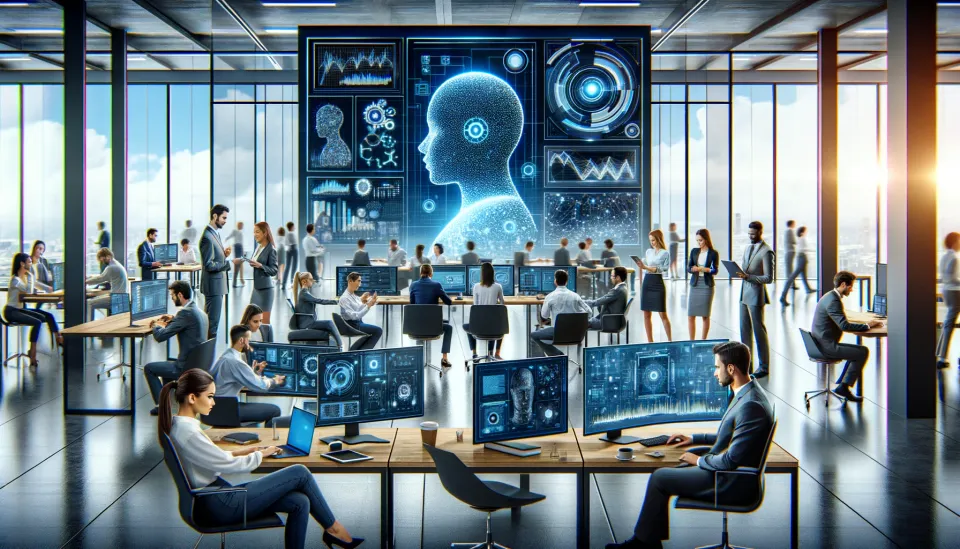
In an era where artificial intelligence (AI) is reshaping our world, understanding and harnessing its power has become pivotal for both businesses and individuals. Enter the realm of Generative Pre-trained Transformers, or GPTs – the latest breakthrough in AI technology. These customizable AI models are not just technological marvels but also harbingers of a new age of personalized AI tools.
But what exactly are GPTs, and why are they garnering such attention across various sectors? This article delves into the heart of GPTs, exploring their evolution, workings, and the transformative potential they hold. Whether you are a tech enthusiast, a business leader, or simply someone fascinated by the advancements in AI, understanding GPTs is key to unlocking a future where AI customization and user creativity merge seamlessly.
GPTs stand at the crossroads of innovation, offering a unique blend of personalization without the need for complex programming skills. This new frontier in AI enables users to tailor AI models for specific tasks and applications, revolutionizing how we interact with technology in both business strategies and personal tasks. As we embark on this journey, prepare to discover how GPTs are not just changing the AI landscape but also empowering users like never before.
The Evolution of GPTs: From ChatGPT to Customizable Tools
The journey of GPTs began with ChatGPT, a groundbreaking AI model from OpenAI that impressed the world with its conversational capabilities. This innovative model laid the groundwork for the evolution of AI, opening the door to more sophisticated and personalized AI applications. But as impressive as ChatGPT was, it marked just the beginning of a new chapter in AI development.
GPTs, the latest innovation from OpenAI, take this concept a step further. They allow users to create custom versions of ChatGPT, tailored to specific needs and preferences. This evolution signifies a shift from a one-size-fits-all AI model to an era of bespoke AI solutions. Users can now build GPTs for diverse applications, ranging from simple day-to-day tasks to complex business processes.
This shift is not just technological but also philosophical. It represents a move towards democratizing AI, making it accessible and customizable for all, regardless of their technical expertise. The implications of this are vast, as it opens up a world of possibilities for individuals and businesses alike. From enhancing personal productivity to streamlining corporate operations, the potential uses of GPTs are as varied as they are revolutionary.
The evolution of GPTs is a testament to the rapid advancements in AI and its increasing relevance in our daily lives. As we continue to explore the capabilities of these tools, we stand on the brink of an AI revolution, one that promises to reshape our interaction with technology and broaden the horizons of what is possible with AI.
How GPTs Work: Personalization without Programming
In a world where technology often seems complex and inaccessible, GPTs stand out for their user-friendly approach to AI customization. The beauty of GPTs lies in their simplicity: they offer the power of AI personalization without the need for any programming skills. This opens up a whole new realm of possibilities for users from all backgrounds.
So, how exactly do these GPTs work? At their core, GPTs utilize the foundational framework of ChatGPT, a highly advanced AI model. However, unlike ChatGPT, which is a general-purpose AI, GPTs can be customized to perform specific tasks or handle particular topics. This is achieved through a process that is as intuitive as having a conversation.
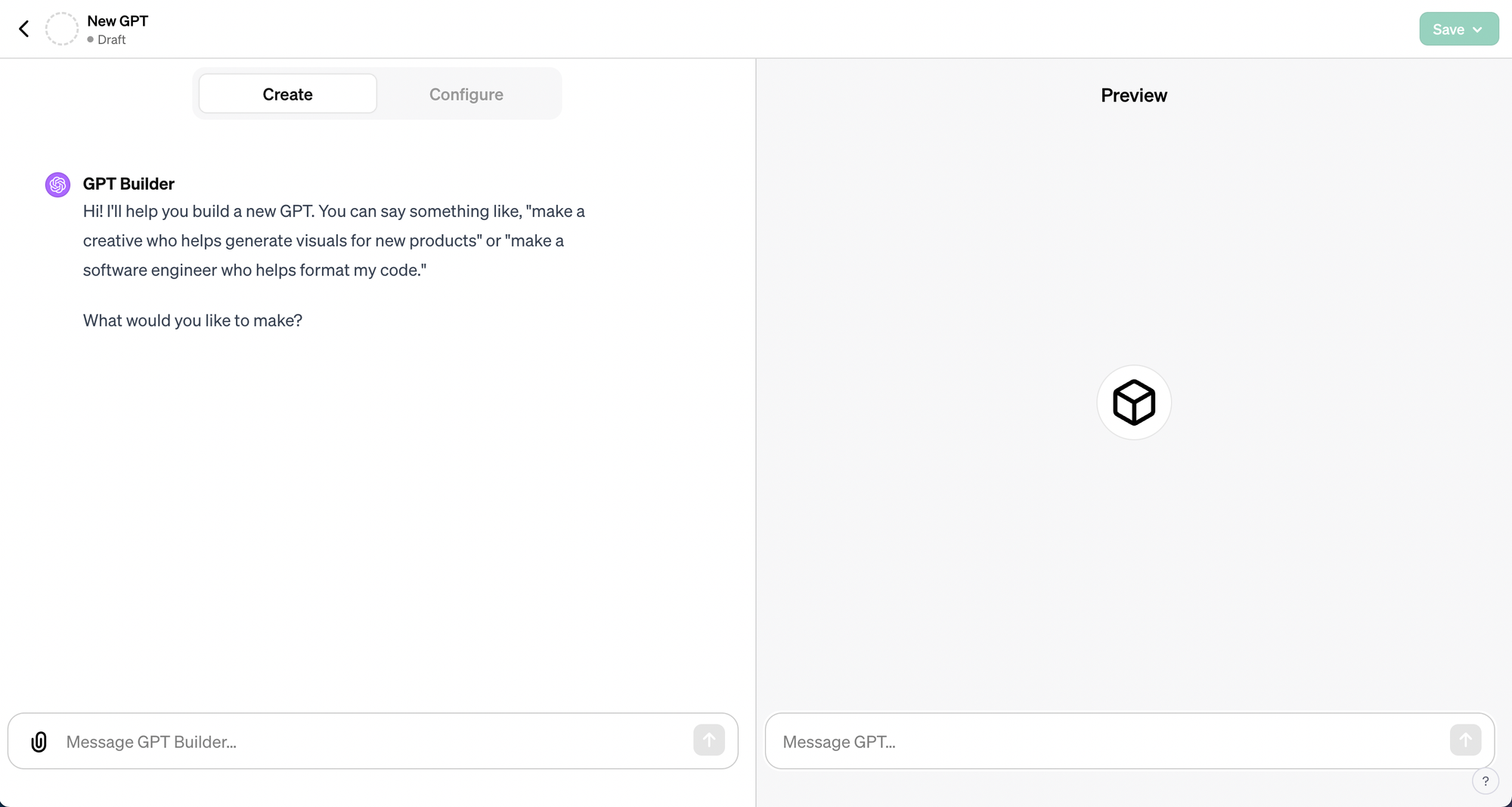
The process starts with the GPT Builder, a tool provided by OpenAI. Here, users can define the scope and capabilities of their GPT. It involves providing a set of instructions that outline the desired knowledge base and skills. This could range from language proficiency for a multilingual chatbot to subject matter expertise for a specialized query-handling agent.
Once the instructions are set, the next step is capability selection. Users choose from a suite of skills – like data parsing, creative design, or predictive analytics – to equip their GPT with the necessary tools to perform its intended function. The final step is the iterative refinement process, where users interact with their GPT, fine-tuning its abilities through feedback and adjustments.
This no-code approach to AI development is not just about convenience; it's about empowerment. By making AI accessible to everyone, GPTs are democratizing the field of AI and opening the door to a future where personalized AI assistants become a part of our everyday lives. Whether it's for business or personal use, GPTs are changing the way we think about and interact with AI.
Step-by-Step Guide: Creating Your Own GPT
The process of creating a custom GPT is both straightforward and engaging, allowing anyone to harness the power of AI for their unique needs. Here’s a step-by-step guide to help you build your own GPT:
1. Access the GPT Builder
First, navigate to OpenAI’s GPT Builder platform by clicking on "Explore" inside your ChatGPT Plus account. This is where the magic begins. The user-friendly interface is designed to guide you through the creation process seamlessly.
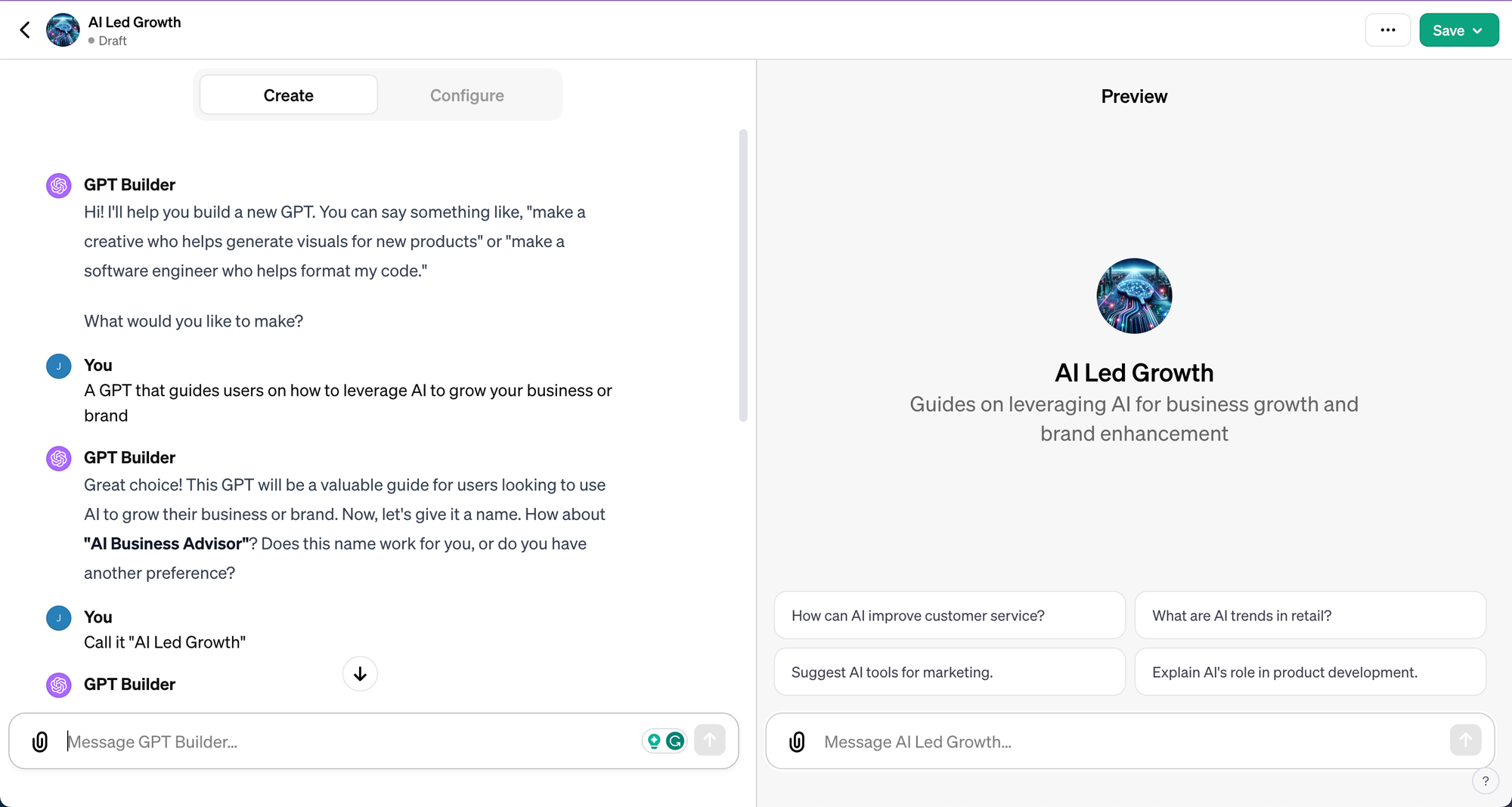
2. Define Your GPT’s Purpose
Consider what you want your GPT to achieve. Are you looking to create a virtual assistant for business analytics, a chatbot for customer service, or perhaps a tool for personal organization? Clearly defining the purpose will shape the subsequent steps.
3. Provide Instructions and Knowledge
Here, you input specific instructions and knowledge that you want your GPT to possess. This can include industry-specific information, language preferences, or particular problem-solving skills. The more detailed your instructions, the more tailored your GPT will be.
4. Choose Capabilities
Select from a variety of capabilities that you want your GPT to have. This could range from data analysis, image generation, to web browsing capabilities. Each capability adds a layer of functionality to your GPT, making it a powerful tool for your specified tasks.
5. Test and Refine
After setting up your GPT, it's time to interact with it. Test its responses and capabilities in various scenarios. This iterative process allows you to refine your GPT, ensuring it meets your expectations and performs effectively in real-world applications.
6. Deploy
Once you are satisfied with your GPT, deploy it into your desired environment. This could be integrating it into your website, using it internally within your organization, or simply having it as a personal assistant.
Creating a GPT is not just about programming a tool; it's about crafting an AI companion that aligns with your specific needs and aspirations. With each step, you're not only building a custom AI but also contributing to the ever-evolving landscape of artificial intelligence.
Practical Applications of GPTs in Various Industries
GPTs are redefining the landscape of various industries with their multifaceted applications, streamlining processes, and enhancing creativity. Here's an in-depth look at some key areas:
Content Creation: From Briefs to Full Writing
In content creation, GPTs are proving to be invaluable. They are not just tools for generating SEO-friendly blog content, but also adept at constructing comprehensive content briefs.
For example, we've created a "Blog Brief Builder" GPT, where the output serves as blueprints, outlining the structure, key points, and tone, ensuring that the final content is aligned with strategic goals. This can be used (as we do) to instruct ChatGPT on creating full articles or handed directly to your content creators.
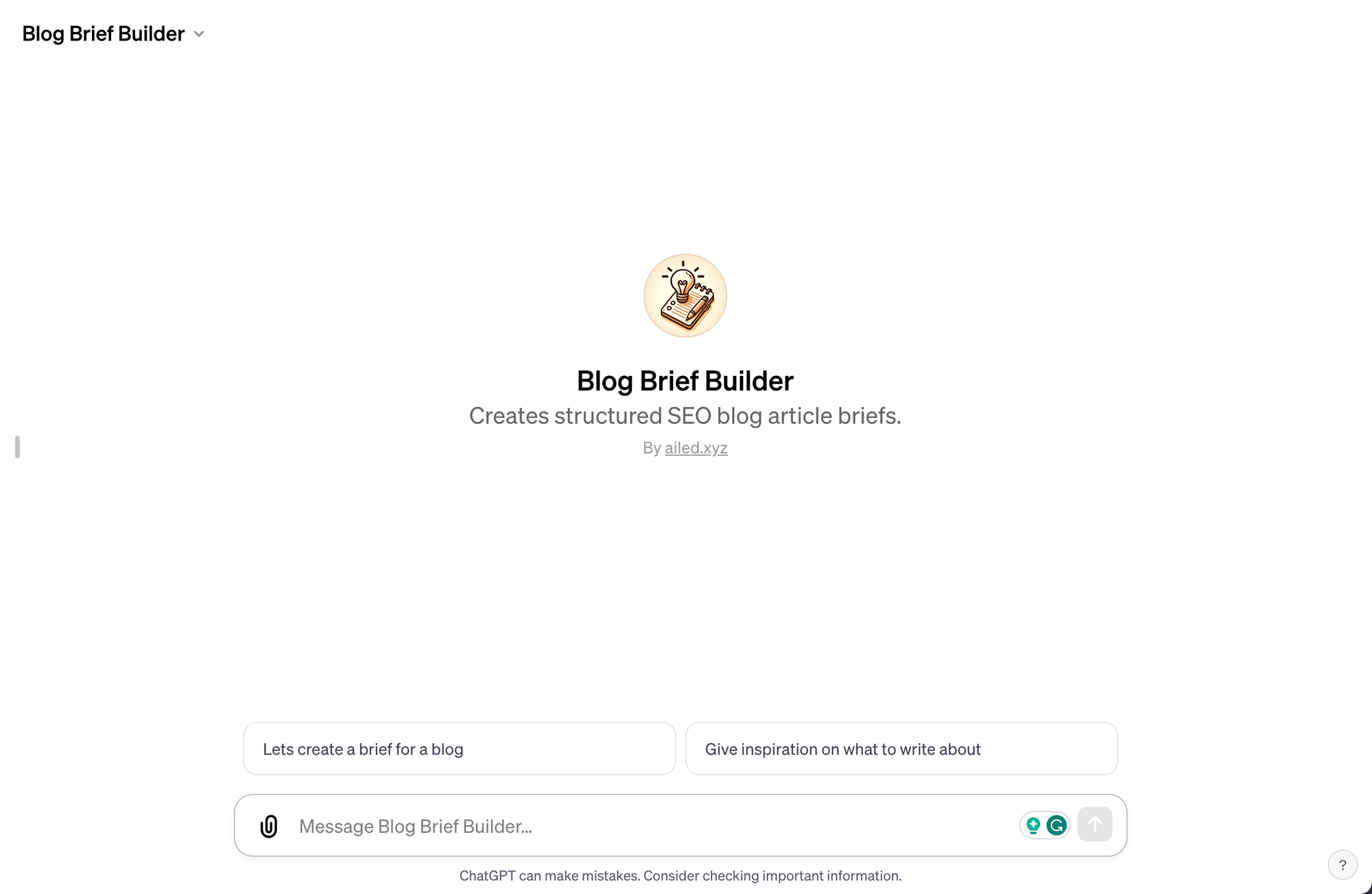
When it comes to full content writing, GPTs can produce detailed, well-researched articles, and engaging social media posts. We've also created an "SEO Blog Writer" GPT, that understands best practices for blog writing and guides you through everything it needs to make an article that will rank on Google.
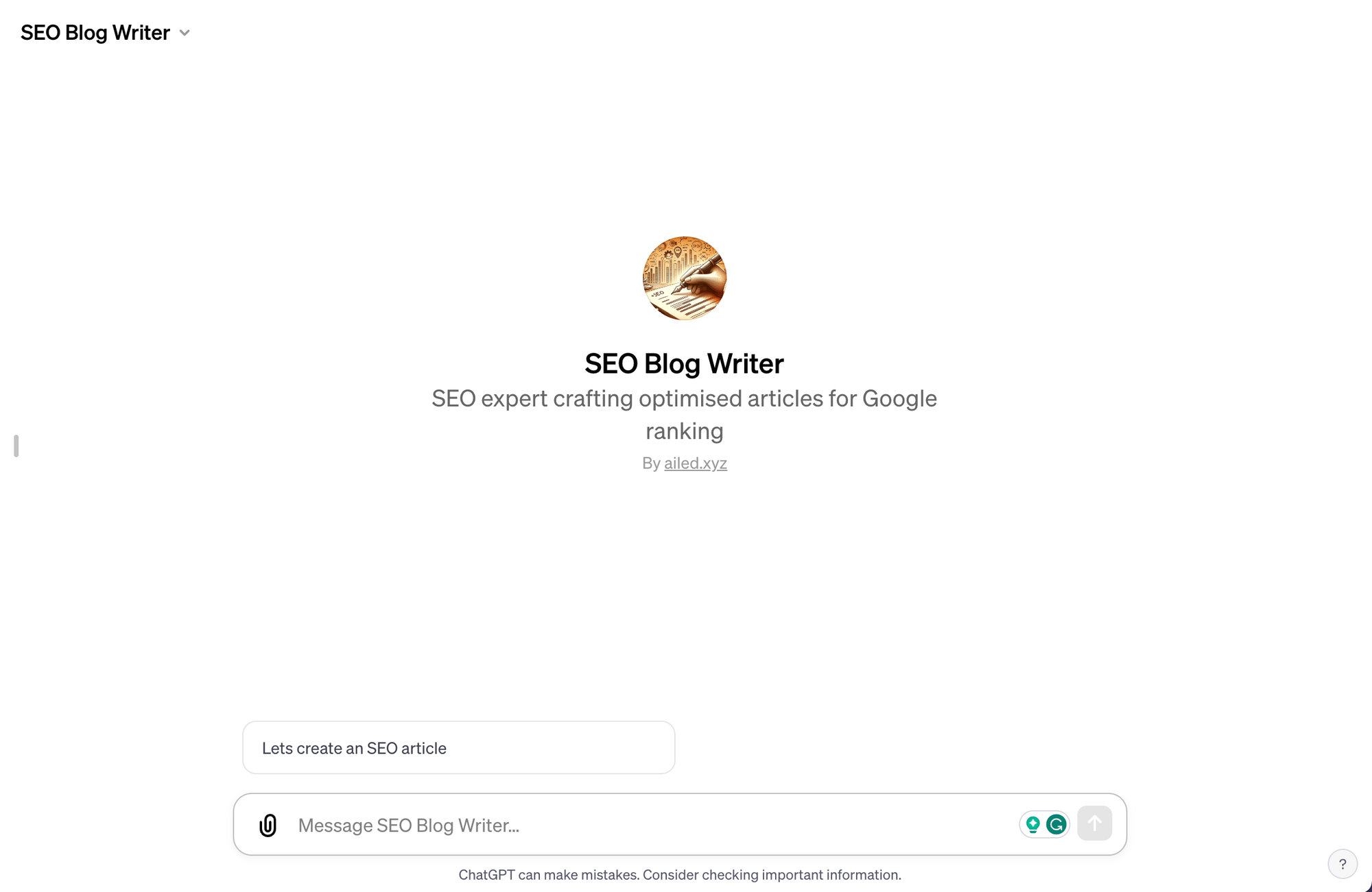
When it comes to content, a GPTs ability to tailor content for specific platforms like LinkedIn and Twitter, ensures that each piece is optimized for its intended audience, maximising engagement and reach.
Social Media Optimization: LinkedIn Profile Enhancement
In the realm of social media optimization, GPTs offer significant advantages. They can be designed to understand best practices around each platform, understand your specific use case and then tailor guidance just for you.
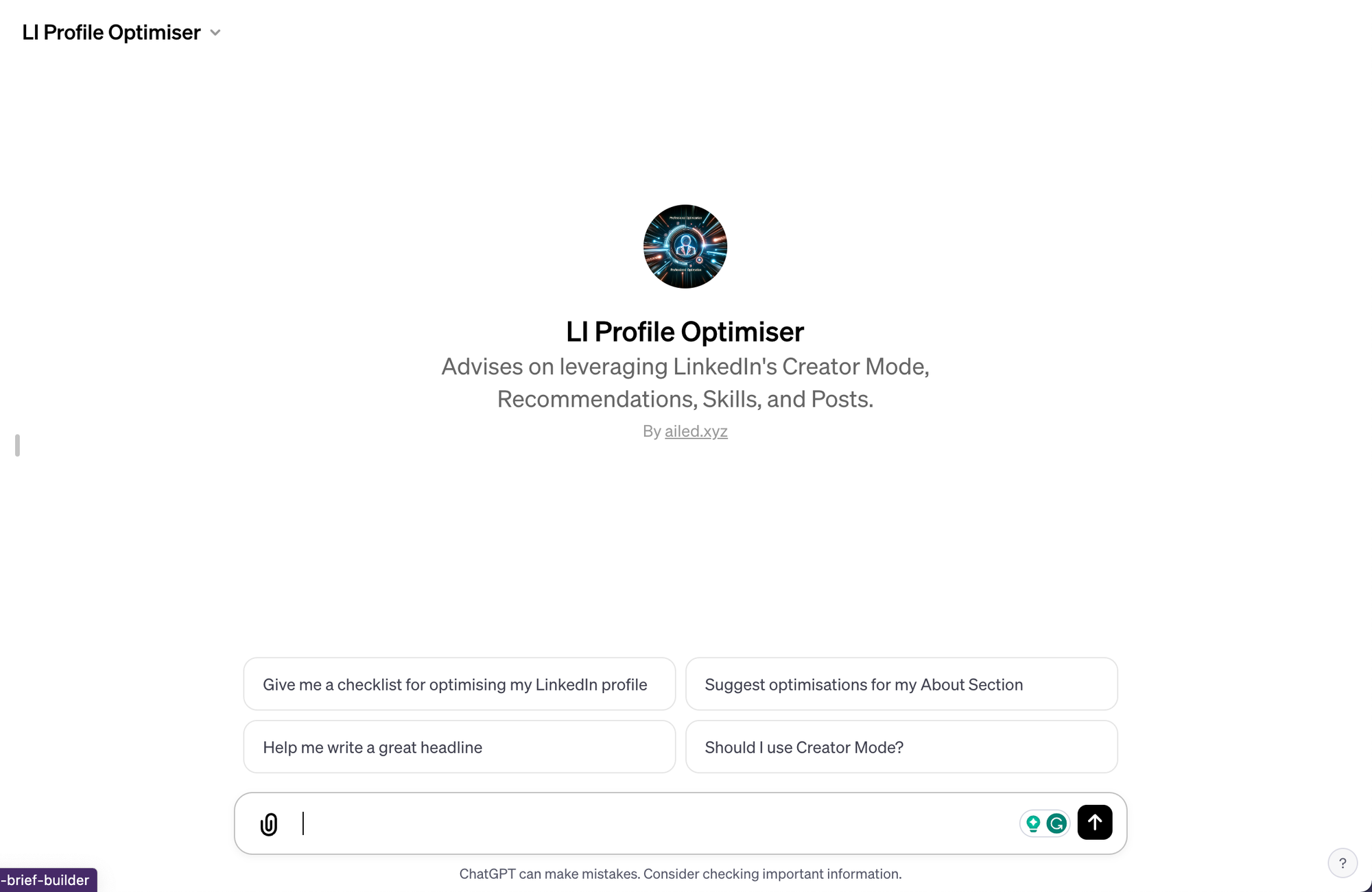
A great example, and one we have already explored is the LinkedIn Profile Optimizer.
A LinkedIn profile is more than just a digital resume; it's a platform to showcase expertise, build a professional brand, and network effectively. Our GPTs can assist in crafting compelling summaries, highlighting professional achievements, and content sharing approaches.
This optimization not only enhances visibility but also positions the profile to attract the right opportunities and connections, aligning with professional goals.
Strategic Advice
GPTs extend their utility to providing strategic advice. They analyze market trends, consumer behaviors, and competitive landscapes to offer insights that inform marketing strategies, product development, and business decisions. This role of GPTs is particularly valuable in enabling companies to stay ahead in their markets.
Ideas and Collaborative Brainstorming
GPTs serve as collaborative partners in brainstorming sessions, bringing a plethora of ideas and perspectives to the table. This capability is a boon for creative processes, aiding in everything from product innovation to marketing campaign planning.
Customer Service and Support
In customer service, GPTs enhance efficiency and customer satisfaction through intelligent chatbots capable of handling diverse inquiries and offering prompt support.
Education and Training
GPTs in education serve as personalized tutors and learning assistants, accommodating different learning styles and providing resources for a comprehensive understanding of subjects.
GPTs and Business: Revolutionizing Corporate Environments
In today's fast-paced business world, staying ahead of the curve is crucial. GPTs are playing a pivotal role in this, especially when it comes to brands and products. Their ability to adapt and provide tailored solutions is transforming how businesses interact with both staff and clients.
GPTs for Brands: Enhancing Brand Engagement and Customer Experience
Brands are increasingly turning to GPTs to create more engaging, personalized experiences for their customers. Custom GPTs can embody the brand's voice, providing consistent and interactive communication that resonates with the target audience. Whether it's through customer service chatbots, interactive marketing campaigns, or personalized shopping assistants, these AI-driven solutions help brands stand out in a crowded market.
By leveraging GPTs, brands can offer a level of interaction that goes beyond traditional methods. These AI models can engage in meaningful conversations with customers, understand their preferences, and provide tailored recommendations and solutions. This not only enhances the customer experience but also fosters a deeper brand loyalty.
GPTs for Digital Products: Driving Innovation and User Engagement
Digital products, from software applications to online platforms, can significantly benefit from the integration of GPTs. By embedding AI into these products, companies can offer more intuitive, user-friendly experiences. GPTs can guide users through features, provide instant support, and even help in product customization, making digital products more interactive and user-centric.
The inclusion of GPTs in digital products can transform the way users interact with these platforms. From offering real-time assistance to adapting to user behavior, GPTs make digital products more responsive and engaging, leading to increased user satisfaction and retention.
GPTs for Staff: Streamlining Operations and Enhancing Efficiency
GPTs are becoming indispensable tools for staff within organizations. These AI models can assist in various internal operations, from automating routine tasks to providing quick access to information and analytics. This not only streamlines workflows but also allows staff to focus on more strategic aspects of their roles, boosting overall productivity.
The use of GPTs internally empowers employees with instant access to data, training resources, and decision-making tools. This results in a more informed, efficient, and agile workforce, capable of responding quickly to changing business needs and challenges.
GPTs for Leads and Clients: Personalizing Interactions and Enhancing Satisfaction
For leads and clients, GPTs offer a level of personalization that is unparalleled. By understanding individual needs and preferences, GPTs can provide customized solutions, advice, and support. This personalized approach not only enhances the client experience but also increases the chances of converting leads into loyal customers.
GPTs help in building stronger relationships with clients by offering consistent, personalized, and interactive engagements. Whether it's through tailored product recommendations, personalized content, or interactive support, GPTs play a crucial role in maintaining and strengthening client relationships.
The Future of GPTs: Community-Driven Innovation and the GPT Store
The future of Generative Pre-trained Transformers (GPTs) is not just promising; it's on the cusp of a new era of community-driven innovation and expanded accessibility. The anticipated launch of the GPT Store by OpenAI is set to revolutionize the way these AI tools are shared, used, and monetized.
Embracing Community-Driven Development
One of the most exciting aspects of the future of GPTs is the emphasis on community-driven development. OpenAI’s vision extends beyond the confines of corporate development, inviting independent developers, hobbyists, and businesses to contribute to the burgeoning world of GPTs. This collaborative approach is expected to unleash a wave of creativity and innovation, as diverse minds from around the globe contribute their unique perspectives and expertise to the development of GPTs.
The GPT Store: A Marketplace for AI Innovation
The GPT Store is poised to be a groundbreaking marketplace for AI tools. Much like app stores for mobile applications, the GPT Store will enable creators to share their custom GPTs with the world. This platform will not only provide a space for showcasing and distributing GPTs but also open up new avenues for monetization. Creators will have the opportunity to earn revenue based on the usage and popularity of their GPTs, incentivizing more innovative and high-quality developments.
Potential Impact on Various Industries
The ripple effect of the GPT Store and the community-driven innovation model is expected to be substantial across various industries. From education and healthcare to finance and entertainment, the availability of diverse, specialized GPTs will enable businesses and individuals to find and utilize AI tools that are perfectly tailored to their specific needs and challenges. This will lead to more efficient workflows, enhanced customer experiences, and a new level of personalization in services and products.
A Step Towards Democratizing AI
The future of GPTs, particularly with the launch of the GPT Store, represents a significant step towards democratizing AI. By making advanced AI tools accessible to a broader audience and empowering users to create and share their own AI models, the barriers to entry in the world of AI are being lowered. This democratization is not just about technology; it's about empowering people to shape the AI that influences their lives and work.
Conclusion: The Transformative Impact of GPTs
As we have explored throughout this article, the advent of Generative Pre-trained Transformers (GPTs) marks a significant milestone in the evolution of artificial intelligence. These advanced AI models are not just technological feats but catalysts for change in various industries, reshaping the way we work, learn, and interact.
A New Era of Personalization and Efficiency
The impact of GPTs is multifaceted. In business, they are revolutionizing customer engagement, enhancing brand experiences, and optimizing internal processes. In education, they are personalizing learning and expanding access to knowledge. Across all sectors, GPTs are breaking down the barriers between complex AI technology and everyday users, enabling a new era of personalization and efficiency.
Empowering Users and Communities
GPTs represent more than just a shift in technology; they embody a shift in power dynamics. By empowering users to create and customize their own AI models, GPTs are democratizing the field of AI. This empowerment is further amplified by the upcoming GPT Store, which promises to be a hub of community-driven innovation, offering a platform for creators to share and monetize their AI solutions.
Looking Towards a Future Shaped by AI
The future of GPTs is not just about the advancement of AI but about how these advancements will be integrated into our daily lives. As we stand at the forefront of this AI revolution, it is crucial to consider not only the technological implications but also the ethical and societal impacts. The way we harness and guide the development of GPTs will significantly influence the trajectory of AI's role in our world.
The Transformative Power of GPTs
In conclusion, the transformative power of GPTs lies in their ability to adapt, learn, and enhance human capabilities. As we continue to explore and innovate in the field of AI, GPTs will undoubtedly play a central role in shaping a future where technology and humanity converge in harmony.
As we embrace this new era of AI, the possibilities are as limitless as our imagination, and the journey of discovery is just beginning.
Frequently Asked Questions (FAQs) about GPTs
What is GPT Used For?
GPTs (Generative Pre-trained Transformers) are used for a wide array of applications across different industries. They can be customized to perform various tasks such as content creation, customer service, strategic planning, and educational assistance. In business, they help in automating processes, providing analytical insights, and enhancing customer interaction. In personal use, they assist in daily tasks, learning, and even as creative aides. The ability to customize GPTs for specific tasks makes them incredibly versatile and valuable in many sectors.
How Does ChatGPT Work?
ChatGPT works on the principles of AI and machine learning, particularly leveraging the transformer architecture. It's trained on vast datasets to understand and generate human-like text. ChatGPT processes input data (text), comprehends context, and produces relevant responses. This involves natural language processing (NLP) capabilities, allowing the AI to interpret queries, understand nuances, and maintain context in conversations. Its continuous learning ability means it gets better over time, adapting to new information and interaction patterns.
How Do I Create My Own GPT?
Creating your own GPT is a user-friendly process that does not require coding skills. Here’s a simple guide:
- Access a platform that offers GPT creation tools, like OpenAI's GPT Builder.
- Define the purpose of your GPT – what tasks it should perform or problems it should solve.
- Provide instructions and input data to shape its knowledge base and capabilities.
- Select from various functionalities you wish your GPT to have (like language processing, data analysis, etc.).
- Test and refine your GPT through interactions, making adjustments based on its performance.
- Once satisfied, deploy your GPT for the intended use, be it in a business environment or for personal applications.
What is the Full Form of GPTs?
The full form of GPTs is "Generative Pre-trained Transformers." This technology represents a significant advancement in AI development. 'Generative' indicates its ability to produce content, 'Pre-trained' signifies that it is trained on large datasets before being made available for customization, and 'Transformers' refers to the type of neural network architecture it uses, which is adept at handling sequential data like text. GPTs are instrumental in pushing the boundaries of AI's capabilities, especially in understanding and generating human-like text.
How do GPTs differ from standard AI models?
GPTs, or Generative Pre-trained Transformers, are a significant evolution from standard AI models. Unlike traditional AI, which often requires extensive coding and data science expertise, GPTs are highly customizable and user-friendly. They allow users to tailor AI to their specific needs and scenarios, without needing in-depth programming knowledge. This makes GPTs more accessible and versatile, capable of a wide range of tasks and interactions.
Can individuals with no technical background create GPTs?
Yes, one of the most groundbreaking aspects of GPTs is their accessibility to individuals regardless of their technical background. Thanks to intuitive interfaces and no-code platforms, anyone can create and customize GPTs for their specific needs. This democratization of AI technology opens up numerous possibilities for creative and practical applications across various sectors.
What potential do GPTs hold for businesses and personal use?
For businesses, GPTs offer a range of applications from enhancing customer service with intelligent chatbots to streamlining internal processes and providing strategic insights. They can be pivotal in personalizing customer experiences and improving operational efficiency. For personal use, GPTs can assist in daily tasks, serve as learning aids, and provide personalized entertainment or information. The versatility of GPTs makes them a valuable tool for both business innovation and enhancing personal productivity and leisure.